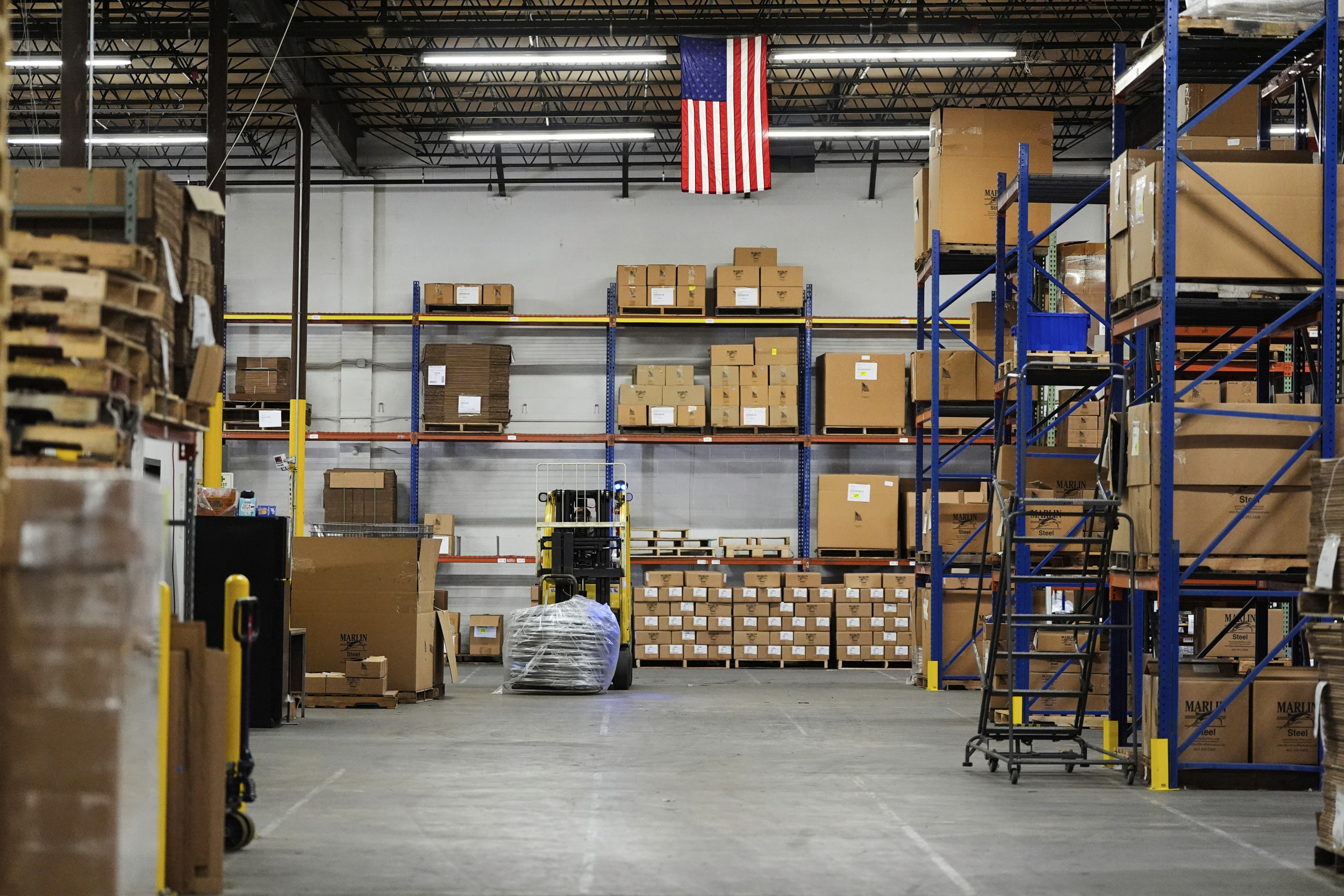
President Donald Trump has made “reshoring” a central pillar of his second-term agenda, pledging to boost American manufacturing and bring jobs back to communities across the country.
Why It Matters
To advance that effort, Trump has announced and implemented a series of sweeping global tariffs—including a baseline levy on all imports, targeted tariffs on specific sectors and “reciprocal” tariffs—some of which have since been paused.
AP Photo/Stephanie Scarbrough
While the president has vowed to revive U.S. manufacturing, the sector itself hasn’t declined in the U.S.—only manufacturing employment has, which can be attributed to a range of factors including automation.
Under former President Joe Biden, factory construction was on the rise, with Dean Baker, economist and co-founder of the Center for Economic and Policy Research telling Newsweek, “What we’re spending building factories, adjusted for inflation, in 2024 was twice what it was in 2019.” The United States remains the world’s second-largest manufacturing power, behind China.
As part of Trump’s economic and manufacturing agenda, increased investment is expected to drive growth in electric vehicle plants, semiconductor facilities and other manufacturing industries, particularly in Southern states, which often have right-to-work laws.
What To Know
The current concentration of manufacturing investment in the U.S. is largely in the Southern states, which accounted for nearly two-thirds of the increase in manufacturing facility construction in the two years to April 2024, data released last year showed.
Playing in the South’s favor is the number of “right to work” states, meaning people can’t be obligated to join a union even if their employer has one. It has the potential to keep labor costs down, and North Carolina, South Carolina and Georgia, where manufacturing is rising, has some of the lowest union membership rates in the country. Electricity in the South also tends to run lower than other areas of the country, reducing overhead costs for a factory.
According to Federal Reserve Economic Data, total manufacturing construction spending topped $234 billion as of March—a dramatic rise over the past decade.
In Arizona, Taiwan Semiconductor Manufacturing Company is expanding its U.S. manufacturing investment by an additional $100 billion. The company announced in March that it has plans for three new fabrication plants, two packaging facilities and an R&D team center. It is the largest single foreign direct investment in U.S. history and is expected to create tens of thousands of jobs, according to the company.
In Texas, Samsung made a $17 billion investment in manufacturing in 2021, which the company said would create 1,800 jobs over the next decade. Tesla is also planning to invest nearly $200 million to open a plant near Houston and county officials estimate the plant could employ up to 1,500 people, with salaries from $50,000 to $150,000.
Earlier this month, Oklahoma state officials announced construction of a $4 billion aluminum manufacturing facility to be built.
What People Are Saying
Steve Bannon, former Trump White House adviser, told Newsweek in an interview: “ So [Trump’s] focus is bringing high value-added manufacturing jobs back, particularly those 100,000 factories with 5 million jobs. I think principally, it’s going to help in the upper Midwest, but people shouldn’t dismiss the Sunbelt, parts of the South, the West, etc.”
Colin Grabow, associate director at the Cato Institute’s Herbert A. Stiefel Center for Trade Policy Studies, told Newsweek in an interview: “ They’re not going to go back to Wisconsin with these high wages and the nice pension and other benefits. It’s going to go to Alabama. You know, a right to work state in the South at a lower wage. It’s not going to be a recreation of what was.”
What Happens Next
Negotiations between the U.S. and various countries regarding trade deals and tariff rates are ongoing as “reciprocal” tariffs are paused for the moment.
The U.S. and China agreed to pause their reciprocal tariffs for 90 days earlier this month, with both sides bringing their rates down by 115 percentage points. This agreement included Trump reducing tariffs imposed on Chinese goods to 30 percent, and Beijing cutting those imposed on U.S. goods to 10 percent.
